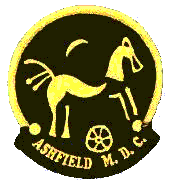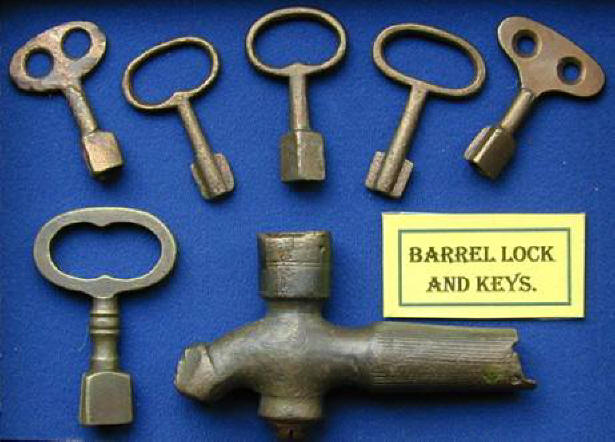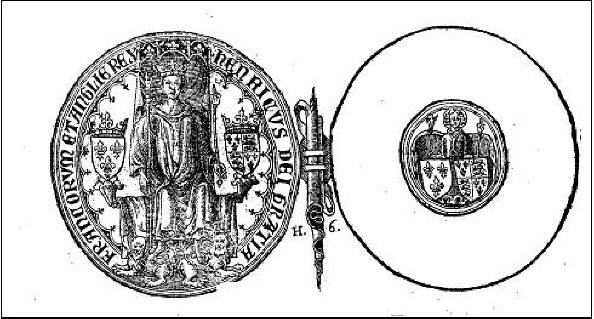|

| |
|
 |
|
GAVIN PHILLIPS 'CLEANS UP' |
|

|
|
FIND OF THE MONTH JUNE,
2011 |
| Coin:- Neil Tryner, Trajan
denarius
|
 |
| Artefact:- Dave Budding, Palstave
axe head.
|
 |
| No entries for the
Most Unusual Find of the Month |
|
FIND OF THE MONTH JULY, 2011 |
| Coin:- Dennis Brown, John Duke
of Brabent, silver sterling. No image
available.
|
| Artefact:- Neil Tryner, Roman
brooch.
|
 |
| Most Unusual Find
of the Month. Dave Hallam, Message Balloon
|
|
FIND OF THE MONTH AUGUST, 2011. |
| Coin:- John Radford, Edward
11 hammered silver farthing.
|
 |
| Artefact:- John Radford,
Zoomorphic medieval swivel.
|
 |
| Most Unusual Find of the Month, John
Radford 'Golden Handcuff' |
 |
|
FIND OF THE MONTH
SEPTEMBER, 2011. |
| Coin:- Tony Elliot. Charles 11
half groat. |
 |
| Artefact:- John Gough, broken
Celtic clothes fastener.
|
 |
| Most Unusual Find of the
Month:- 'Boars Tooth' |

|
|
FIND OF THE MONTH, OCTOBER, 2011. |
| Coin:- John Wilkinson,
Coenwulf silver penny.
|
 |
|
JOHN WILKINSON’S COENWULF PENNY FIND
OF THE MONTH SEPTEMBER, 2011
Report by Martin Allen, Fitzwilliam Museum on
John’s penny:-
Rory Naismith’s recently published book ‘The Coinage
of Southern England 796—865’ lists 24 other coins of
the East Anglian moneyer Lul in this type of
Coenwulf of Mercia (Naismith E10.2), but there is
great variation in the inscriptions of these coins.
This new coin is from the same obverse die as
Naismith E10. 2f, which has the unusual reading +CONVVLCVEXM.
A SUPERB FIND FOR JOHN’S FIRST
HAMMERED |
| Artefact:- Dennis Brown, Roman disc
brooch |
 |
| Most Unusual Find of the
Month:- John Radford, Suggestive looking 'Gas
Fitting'.
Luckily to preserve the reputation of this
newsletter and so as not to offend the delicate
sensibilities of our readers no photograph is shown! |
|
DAVE BUDDING
WITH HIS SUPERB PALSTAVE AXE HEAD |
|
 |
 |
|
OTHER FINDS MADE OVER THE
PERIOD |
 |
HENRY V111. 1509—1547.
Hammered silver groat Found by John Gough on
a club search. Second coinage 1509-1547).
Rose mintmark. Saltire abbreviation marks.
North number 1797. PAS recorded.
DENO-E13D87.
|
|
COPPER BRACELET |
|
 |
This copper bracelet was found by Terry
Hurt on a club search. When found it
raised considerable speculation as to
its age from others on the search.
Guesses ranged from Celtic to it being
a modern copper bracelet used by a
rheumatic sufferer. It was shown to the
FLO for arbitration and Charlotte
decided it was modern and not suitable
for recording. |
|
BARREL TAP WITH LOCK |
 |
This nice example of a barrel tap
was found by Sylvia Tryner of a
recent club search.
Members of the club, new to the
hobby, may not know what barrel taps
and keys were used for. To remedy
this, reproduced on the facing page,
is an article first published in the
Spring 2006 newsletter.
|
|
 |
|
BARREL LOCKS AND
KEYS
Most metal detectorists have
found a barrel tap lock key and
occasionally a barrel lock
itself. This is a brief
description and explanation of
their use,
The barrel tap lock
was designed with a collar that
allowed access to the contents
of a barrel by the holder of the
key for that particular lock.
Security was achieved by cutting
a hole in the top of the collar
that matched exactly the shape
of the end of the key. The key
then could be used as a handle
to turn the tap on and off.
Unfortunately the top of the
cover is missing from the barrel
lock illustrated above.
Tap locks and keys are not
uncommon finds made by metal
detectorists. This may indicate
that they were in use in the
fields, perhaps during harvests
or social activities like,
fairs, markets or even for farm
workers refreshment breaks. |
|
 |

Display of Roman coins all
found in the same field by
Steve Smith. |

TOY CANNON
Found by
John Gough |

ROMAN
BROOCH
Found by
Terry Hurt. |
|
ASHFIELD
METAL DETECTING CLUB BRITISH
MUSEUM TRIP, AUGUST, 2011
|
|

SAM
MOORHEAD |
An enjoyable day out was
experienced by members of
the club when they visited
the British Museum in
London.
We were met there by T. Sam
N. Moorhead FRS. Finds
Adviser for Iron Age and
Roman coins. Part of his
duties include overseeing
the recording and
researching of Iron Age and
Roman coins on the Portable
Antiquities Scheme database.
Sam made the party very
welcome and gave us a
comprehensive guided tour of
the Celtic and Roman
Galleries. We were impressed
with his knowledge of the
coins and artefacts on
display and his stated
willingness to identify any
and all Roman coins,
irrespective of condition,
found by club members. .
Many photographs of the
displays were taken during
the visit by Anthony James
and John Radford some are
shown on the following
pages.
|

MAIN ENTRANCE BRITISH
MUSEUM. |

GOLD RINGS
HOARD
FOUND AT.
THETFORD,
NORFOLK.
|
|

GOLD TORC |

Gold Noble and clipped gold
noble of Edward 111 1354-5,
London mint.
Not all clipping was
mischievous. Nobles of
Edward 111 and Richard 11
were clipped down when the
lighter weight standard was
introduced in 1412 so they
could continue in currency. |
|
GOLD
MEDALLION
 |
This gold medallion was
struck in Trier in AD
296 to commemorate the
overthrow of the
self-proclaimed Emperor
of Britain, Allectus, by
the Roman general,
Constantius I Chlorus.
The reverse side shows
Constantius being
welcomed by the
personification of
London at the gates to
the city which he saved
from being sacked. He is
hailed as 'Restorer of
Eternal Light' while his
soldiers move up the
Thames in a military
troop-ship.
While in
Britain legend has it
Constantius met the
Empress Helen and
they became parents
of Constantine the
Great.
|
|
 |
THE BATTERSEA SHIELD
The Battersea Shield is
a sheet of bronze dating
from the 1st., century
B.C. or 1st., Century
A.D. Although it has
been suggested that it
could date to about
300B.C.
It was dredged from the
bed of the River Thames
in 1857 during the
excavations for Chelsea
Bridge.
|

SAM MOORHEAD
'In full flow'
|
| DEAD
MEN TALK |
DECADE RING |
|
 |
A talk and
presentation on
Archaeological
Forensics was given
by guest speaker,
Lillian Dawes to the
club at the June
club meeting. It was
interesting and much
appreciated by the
members present |
 |
This strange object
was found, not on a
club search, by Dave
Rhodes. No one in
the club could
identify it. However
John Radford
researched it and
came up with the
following:- A lead
or lead-alloy decade
ring with an oval
bezel and ten
sub-spherical
projections around
the hoop. The bezel
probably carried
a relief-moulded
religious motif,
which has either
worn flat or is
unclear on the
images. Their hoops
usually have ten
knobs, as on the
present example,
with the bezel
forming a larger
eleventh one. An Ave
was repeated as each
of the smaller knobs
was touched, and a
Pater Noster at the
bezel. Examples date
from the 15th to the
early 19th century
|
|
MARKET TALLY
Found by Tony
Knight on a
recent club
search. |
 |
W.Dennis & Sons
Fruit and Potato
Salesmen
26,
James St.,
London, W. 1.
1894-1904.
The 5 shilling
market tally
shown here must
have been for a
very large or
expensive
container, the
usual charge was
sixpence or 1
shilling.
The purpose of
the market
tallies was to
ensure that the
containers, used
by market
wholesalers,
were returned to
the supplying
wholesaler so
either 1s. or
6d. was added to
the bill for
each container.
To reclaim this
deposit both the
container and
the tally had to
be returned at
the same time.
This prevented
the return of
containers by
unauthorised
persons. It is
believed that
this security
system was
introduced in
the 1860s and
ended in the
1920s being
replaced with an
’Empties Credit
Note’.
|
|
 |
| |
|
|
PAY OF SOLDIERS
IN THE REIGN OF
EDWARD III. 1327
– 1377.
The
King's
army, in France,
Normandy, and
before Calais,
besides the
Lords, consisted
of 1,294
combatants and
attendants, and
their pay for
one year and 131
days amounted to
£127,201 2s. 9d.
The following
specifications
of particulars
will furnish an.
idea of the
military pay and
service of this
time:-
" To Edward,
Prince of Wales,
being in the
King's service
in Normandy,
France, and
before Calais,
with his
retinue, for his
wages, of war
20s. a day;
eleven
barinarets every
one taking 4s. a
day; 102 knights
each 2s. a day;
264 esquires,
each 12d. a day,
384 archers on
horseback, each,
6d. a day; 69
foot archers,
each 3d. a day;
513 Welshmen,
whereof one
chaplin at 6d. a
day, one
physician, one
herald or cryer,
5 ensigns, 25
sergeants or
officers over 20
men, each 4d.
day; 480
footmen, each
2d. a
day.
To Henry Earl of
Lancaster, being
in the Kings
service before
Calais, with his
retinue and one
other earl, each
6s. and 3d. a
day; eleven
barinerets, each
4s. a day; 193
knights, each
2s. a day;
5l2.esquires,
each 12d. a day;
46 men at arms
and 612 archers
on horseback,
each 6d. a day.
To William Bohun,
Earl of
Northampton, and
his retinue, at
the same rate.
To Thomas
Hatfield, Bishop
of Durham, 6s.
8d. a day, 3
barinerets, 48
knights, 164
esquires, 8l
archers on
horseback, as
above.
To Ralf, Baron
Stafford, and
his retinue, as
above.
These things
appear in a
contemporary
record published
by
Dr. Brady
in his History
of England. |
|
HAMMERED
COIN
STRAIGHTENING
KIT |
|
 |
John Radford
is highly
delighted
with his new
hammered
coin
straightening
kit. He won
it in a
recent E-bay
auction.
Although it
is not of a
suitable
size to
bring to
search
sites, he is
willing, for
a large fee,
to
straighten
any bent
coin at
home.
John,
however,
cannot offer
any
guarantee
that the
straightening
will be
successful
and can not
accept any
claim for
damage to
the coin
arising from
his
actions.
|
|
BOOKS |
|
 |
The book
for this
issue of
the
newsletter
is The
Kings
and
Queens
of
England
by Ian
Crofton.
The
edition
I was
lucky
enough
to have
been
given as
a
birthday
present
in 2009
is
hardback
with
dust
cover
and 256
slightly
larger
than A4
pages.
Price
then
£16.99.
The
description
on the
back
cover of
the book
is as
follows:-
A
lavishly
illustrated
history
of the
lives
and
reigns
of the
kings
and
queens
of
England
- from
the
house of
Wessex
to the
house of
Windsor.
Lively
accounts
of the
lives
and
reigns
of 59
English
monarchs
from
Alfred
the
Great to
Elizabeth
11.
Detailed
timelines,
key
biographical
facts,
feature
boxes
and
display
quotations
for each
monarch.
Generously
illustrated
with 135
full
colour
images.
Includes
complete
family
trees
for each
royal
house
and an
index of
names
and
events.
The
cheapest
price
on
the
internet
was
£9.30,
however
that
came
with a
postage
charge
of
£12.79.
It was
from
South
Africa!
The
cheapest
UK price
was
£11.45
and
delivery
at £2.45
from
Uncle
Phil’s
Bookshop,
Coventry.
|
|
GREAT
SEAL
OF
THE
KING
OF
ENGLAND
HENRY
V1
1422-1461,
1470-1471 |
|
 |
Ashfield Metal Detecting Club reserves the right not to be responsible for the
correctness, completeness or quality of the information provided in this newsletter
and does not, necessarily, support the views of the contributors
***
|
Please note that the illustrations in the newsletters are not to scale.
*** |
|
